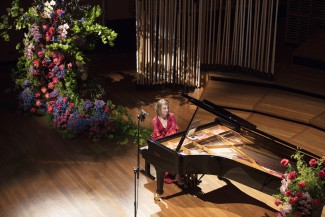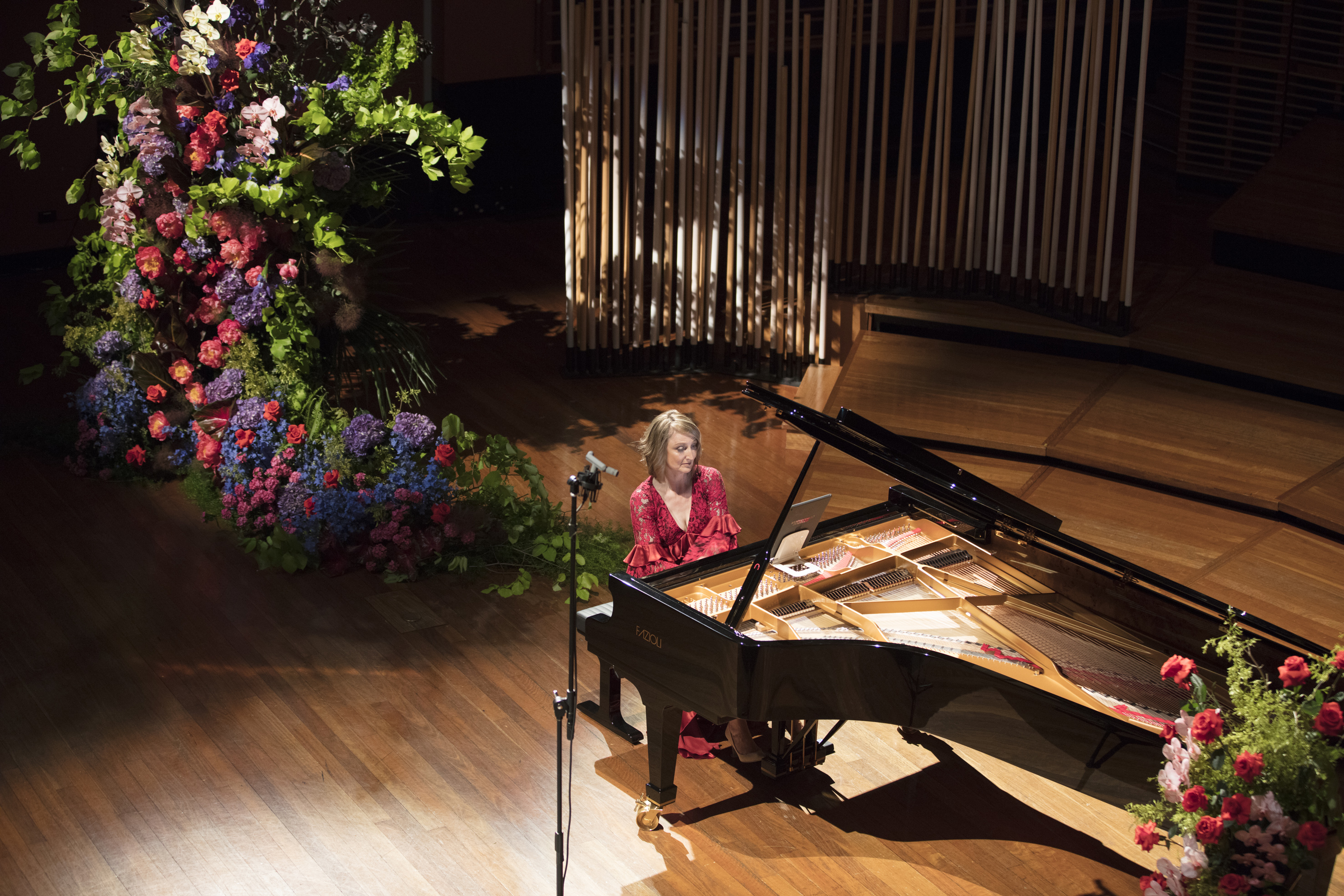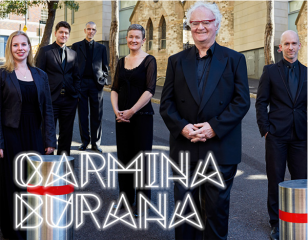Concert Review: The Sonata Project/ Bernadette Harvey

The Sonata Project
Bernadette Harvey
Verbrugghen Hall, Sydney Conservatorium of Music
11 November 2017
Written by Ria Andriani
One of the aims of Bernadette Harvey’s new concert venture The Sonata Project is to bring back the atmosphere of Romantic soirees in European salons, offering a new experience in classical piano music for contemporary audiences. This concert was also an occasion to perform works by commissioned from contemporary female composers and to launch the CD of the music performed at this event.
This inaugural performance from The Sonata Project featured three landmark world premiere’s by Australia women – Aristea Mellos’ Sonata for solo piano (2016), Melody Eötvöss’ Demoiselle D’Ys for solo piano and Jane Stanley’s Piano Sonata (2016) – alongside a recent work The Sea Star Fantasy for solo piano (2015) by Australian master musician Ross Edwards. Harvey’s technical mastery, musical sophistication and personal connection with the composers made for a vivid snapshot of some of the most recent developments in Australian piano composition and performance.
The concert was preceded by drinks in the foyer whilst students of Sydney’s Conservatorium of Music provided entertainment. The performance itself was beautifully presented by Rachel Kent from the Museum of Contemporary Art who engaged in conversation with two of the composers: Aristea Mellos and Ross Edwards.
Aristea Mellos’ three movement sonata transported the audience to the charms of Rome and the wilderness of the moors of Brittany. Harvey offered a rich interpretation of Mellos’ piece which was composed for her and commissioned by the Australia Council. The first movement We Ate the Stars, contained delicate rising notes in contrast to the claustrophobia invoked by the clashing chords of the second movement, Cardinal Spada’s Gallery, the composer’s yearning for freedom, manifested in the widening registration of the chords at the end of the movement. The final movement, Vanishing Point took the audience on a stroll down the streets of Rome, with each motif offering brief glimpses of something new versus the familiar.
In contrast to Mellos’ programmatic piece, Melody Eötvöss two-movement sonata The Demoiselle D’Ys was a piece of disorientation. Inspired by the 19th century American writer, Robert Chambers’ book of short stories, The King in Yellow, The Demoiselle D’Ys depicts a traveller lost on the moors of Brittany, represented by a thread of notes offering some melodic direction which eventually becomes lost in a texture of chords. This movement featured emphatic bass notes, underscoring a sense of the traveller’s bewilderment. The second movement, Verite Cachée (Hidden Truth) paints a happier theme of love, although it is laced with warning as a single ostinato note emerges in crescendo. The thread in Verite Cachée is more disconnected, weaving in and out of the texture with the lines eventually coalescing into melody and counter-melody, ending with a decaying tonic in the right hand, followed by an echo in the bass at a slightly lower pitch – rather like an unanswered question.
Jane Stanley’s sonata was the most challenging piece for me to absorb. A complex work, it is sculptured from short staccato figures which grow to quite fluid and rhythmic motifs. The piece reminded me of a sprinkling of dust moats disintegrating in the light, with the music building to crashing meteors, enhanced by dramatic pauses which let the sound decay, allowing a moment to settle before scattering again, finally vanishing in the wind.
Ross Edwards described his Sea Star Fantasy. The piece had an underlying plainchant of Ave Maris Stella, with its ecological and eco-feminist significance, which Edwards wrote in his unique dance-like style of composition. The Ave Maris Stella was the thread in Sea Star Fantasy used to honour and refer to the Virgin Mary as a symbol of the universal Earth Mother, nurturer and protector of the environment.
This Sonata Project concert incorporated engaging visual elements such as backdrops by artist Lara Merrett and interior design by Lynn Bradley, featuring a leather armchair set on a bed of moss. The collegiate atmosphere was a welcome element, offering a wonderful opportunity to socialise and discuss the evening’s music.
The Sonata Project is a very worthy enterprise and an important element in sustaining Australian pianos music into the 21st century and beyond. Future developments are awaited with interest.
Ria Andriani for SoundsLikeSydney©
Ria Andriani graduated with Bachelor of Music/ Bachelor of Arts from UNSW in 2015. She now sings as a soprano with various choirs in Sydney, and presents recitals in collaboration with other musicians. Follow Ria on www.facebook.com/RiaAndrianiSoprano
The CD of The Sonata Project can be purchased via www.bernadetteharvey.com or www.tallpoppies.net.
This article was amended on 21 nov 2017. Ed.







